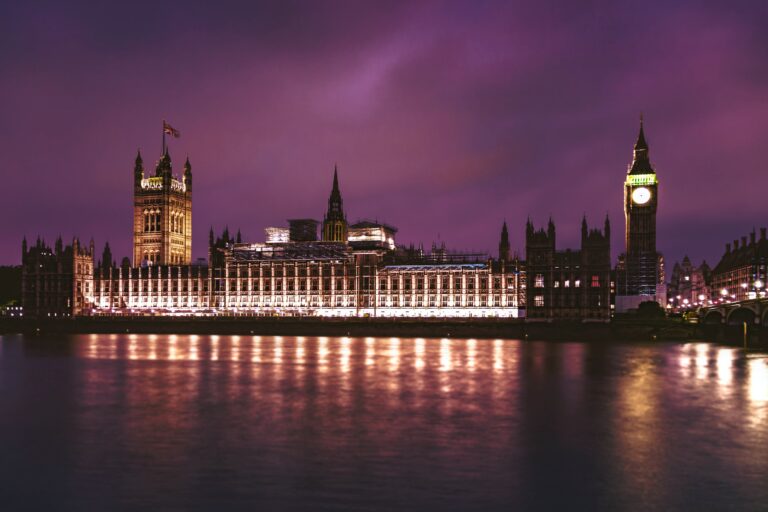“Take back control” was the great cry of the winning Leave side in the 2016 Referendum. Now that COVID is subsiding and the Government have delivered a successful BrExit, albeit with some of the wrinkles still to be ironed out, our thoughts can move closer to home.
The Lords performs a vital role as a revising and debating Chamber, holding both the Commons and Government to account. The standard of debate is often high on the red benches, and it lacks the sometimes ‘bear-pit’ atmosphere of the Commons. However, it has come under criticism as being unrepresentative of todays Britain. It remains unelected of course, with seats held for life. With nearly 800 members, I’m told only the Chinese communist congress is a larger legislature!
It contains many distinguished names, but it must also be said that others have clearly risen without trace! As well as the 26 Bishops (the “Lords Spritual”), these are currently about 260 Conservatives, 180 Labour, 90 Lib Dems (with only 11 MPs!) and 230 independent Cross-benchers and non-affiliated Peers (the “Lords Temporal”). Smaller parties such as UKIP, Greens and DUP have never had more than a handful of Peers between them.
The Lords seems to be one of the ‘Gordian knots’ of British politics- a seemingly intractable problem that defies solutions. Historically, both the Lords and Commons had equal legislative powers. The full assent of both was required for Bills to become an Act.
In more modern times, initial attempts at reform date back to 1911, under the then Liberal government. The Lords lost their right to vote down financial measures.
Life Peers were first introduced in 1958. Harold Wilsons Labour government tried, and the withdrew, reforms in 1968. Reforms prior to that consisted of limiting on what, and for how long, the Lords could defy the Commons. In practice, the Lords can delay the Commons- causing it to think again- but not defy it for ever. When the Parliamentary timetable is tight, or there’s only a thin Commons majority, the Lords can lead the Government to accept amendments.
The ‘Salisbury Convention’ however lays down that the Lords will not oppose the 2nd or 3rd Reading of any legislation promised in the election manifesto of the Government.
Labour under Tony Blair passed reforms in 1999 which did away with all but 92 of the hereditary Peers. 90 of the 92 were elected by colleagues and were often held to be some of the most active Peers. When a death occurs, a ‘by-election’ with other Peers voting is held.
A Royal Commission under John Wakeham recommended a Lords of 550 members, with an elected minority, an independent appointments body, a formal voice for the UK Nations and regions, no single Party to have a majority and a substantial proportion of Peers who were not professional politicians.
A Lords Appointments Commission was created in 2000, this vets Prime Ministerial recommendations. Names can, and have been, knocked back. Not enough, according to some people! It can also put forward suitable candidates of its own, and has appointed nearly 70 independent Cross-benchers over the years. These have included former Chief Rabbi Jonathan Sacks, Paralympic medal-winning Tanni Grey-Thompson, businesswoman Martha Lane Fox and John Bird, founder of The Big Issue.
Proposals were put to Parliament in 2003 for various elected and appointed options for the Lords, with Blair supporting a fully appointed Chamber. The Lords was strongly for an all-appointed House and the Commons failed to support any single option. An 80% elected house was defeated by only 3 votes. Blair was happy to see most of the Hereditaries removed, but did not want to give up the power of the PMs patronage.
We should be careful of criticising the Hereditaries out of hand. Newly ennobled Daniel Hannan writes how they seem more independently-minded and hard-working than many others. However, criticism of them is often focused on them all being male (due to male Primogeniture).
Further proposals and votes under a 2007 White Paper proposed a 50/50 elected/appointed Lords. Elections would held on a regional list, with elected Peers serving a single 15 year term. Seats in the House would not automatically require, or result in, a Peerage. Free votes produced majorities in the Commons for an 80% and 100% elected Lords. The Lords remained in favour of a fully appointed House only. However, decision was again delayed.
At the 2010 election all 3 main parties were committed to reform and the Tory/Lib Dem coalition committed to a “wholly or majority elected” upper chamber. This failed to proceed due to opposition in both Houses, with 90 Tory MPs defying a 3 line Whip. It would be fair to say that, within the Coalition, Cameron was a lot more happy about that than Clegg!
The most recent move towards reform was the 2017 Lord Burns report (commissioned by speaker Lord Fowler). This recommended:
£ 600 seat House
£ Members be appointed in line with General Election results for a 15 year term
£ No single Party should have a majority and at least 20% should be Cross-benchers
£ A ‘1 in / 2 out” policy to reduce numbers to 600
The ‘Lords question’ should be caried forward as part of wider Constitutional reform. It might be started under this Government and implemented- subject to public approval in a Referendum- under the next? But let’s get COVID sorted out first, and the economy back on track.
Gordon Brown did make a suggestion worth re-considering of a House of the Nations and Regions: https://www.itv.com/news/2020-01-20/gordon-brown-suggests-replacing-house-of-lords-with-council-of-nations-to-unite-country-and-avoid-indyref2
Personally, I’d like to see a partly-elected House that would retain the best and the most active of the current Life and Hereditary Peers. We don’t want a ‘year zero’ legislature. If only partly elected, it could not rival the mandate of the fully elected Common. We need to be clear the Commons stays as the primary Chamber. It should also have a good number of Cross-benchers and Independents. Ideally, no one Party would command a majority- mind you, we were told that about the Scottish Parliament!
In the longer run, I think widespread Prime Ministerial patronage will be increasingly hard to defend. One possible solution could be to limit the number or percentage of Peers the PM could appoint, subject to approval by the Appointments Commission.
In 2006 Tony Blair was caught up in a ‘cash-for-honours’ scandal, indicative of what problems can emerge. This probably hastened his departure as PM. http://news.bbc.co.uk/1/hi/uk_politics/6179911.stm
Appointed Peers should be chosen for their expertise and experience in a particular field, and by an independent body. A revising and checking Chamber needs specialist members there for what they know. Many of these will not put themselves forward for election on a Party political basis. For example: former Armed Forces and Police chiefs, eminent Scientist and Professors, religious and business leaders.
The Tories 2019 election manifesto promised to “look at the broader aspects of our constitution” including the Lords. As promised a Constitution, Democracy and Rights Commission has been set-up to look into these. Not surprisingly perhaps with COVID it has found it difficult to get going, and (at time of writing) does not appear to have met since Dec, and has no meetings planned.
In the short term, it is difficult to see where the time and political urgency exists for reform. The Government, quite rightly, has other priorities. However, post-BrExit, wider reforms are needed. The precarious position in Scotland should have us thinking about how Westminster, and our wider governance, can be improved. We haven’t heard the last of those ‘Lords-A-Leaping’ yet.
ENDS----------------------------------------------------------------------------------------------------------
 Email Tim
Email Tim


